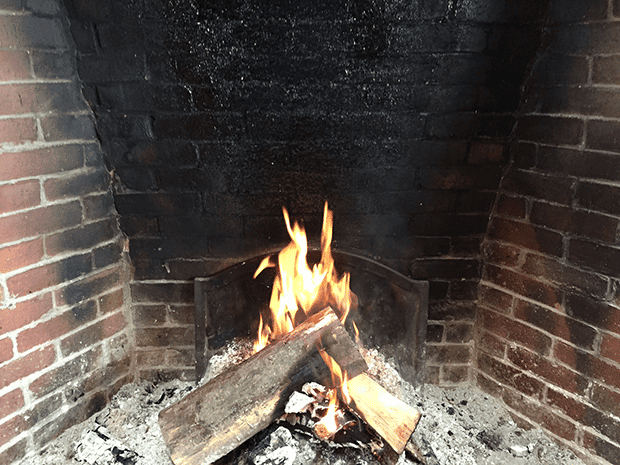
We all love the warmth of a fire on a cold winter day, but recent chimney fires in Ashburn, Leesburg, and Chesterfield remind us that regular maintenance is essential to ensure fireplace safety.
Simply put, dirty chimneys cause chimney fires. Chimneys are made to expel the smoke by-products of combustion. Much of this is gas, but there are some solid particles as well. As the smoke cools on its way up the chimney condensation occurs and creosote forms from the combination of materials in the smoke. The slower the smoke is moving up the chimney, the more likely it is that creosote will form. When creosote builds up, it can catch on fire.
In 2008, a couple vacationing at Seven Springs Ski Resort in western Pennsylvania lost their lives when a chimney fire engulfed their rental condominium in the middle of the night. Their estate filed a wrongful death suit against the condo’s owner, the chimney sweep company, and another guest who built the fire, claiming negligence. Whether or not that wrongful death claim held in court, it is clear that regular chimney maintenance is worth the investment.
The bottom line is that clean chimneys do not catch fire.
As someone who burns 4-6 cords of wood per year, I’ve realized that “unseasoned” wood is the biggest contributor to creosote build-up. Ideally, firewood should be cut and stacked for a year before it is burned to give it time to dry out. Firewood sellers know this, but many cut corners by selling wood that is not fully seasoned. Wood that has been cut and split for only a couple of months will burn, but it will generate considerable creosote in the process. Moreover, much of the combustion heat is wasted in essentially “boiling off” the excess moisture in the wood so there is less heat generated into the room while creosote is building up on the walls of the chimney.
Even when using properly seasoned firewood, a chimney should be exposed to a very hot fire periodically. This burns the residual creosote in a controlled manner and avoids dangerous levels of creosote build-up. Wood stoves that are constantly damped down for the efficient and slow burn of wood should be opened up fully and burned hot (700 to 900 degrees) every couple of days to burn off accumulated creosote.
Lastly, beware of old chimneys because the internal mortar may be weakened. They are often unlined and seemingly draw well and safely. The user may not realize that the old mortar between the bricks has deteriorated and may be allowing dangerous levels of heat to come in contact with combustible framing around or through it. This is a common source of fires in old houses.
We highly recommend the regular use of a competent chimney sweep to inspect the interior chimney and advise homeowners about safe maintenance.